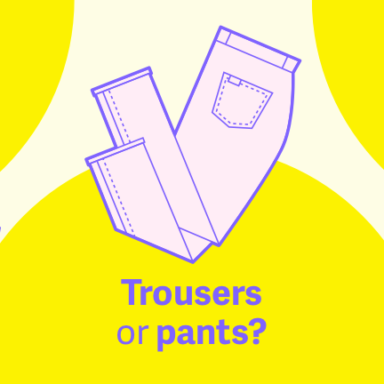How our creative branding agency breaks down complex information
Our job as a creative branding agency isn’t just to make things look amazing.
Simplicity matters. Whether we’re decoding page after page of technical data or thinking of a snappy headline for an email, making information easier to read and understand is a huge part of our day-to-day, given our heritage as an information design agency.
But keeping things simple isn’t always clear-cut. You might be dealing with an audience that has no idea about the topic you’ve spent months researching. Or, you might need to cater to a range of reading and knowledge abilities. All while making sure everyone gets what they need out of your content.
Navigating these challenges is often tricky, but there are a few ways to make complex ideas easy (or at least much easier) to understand.
Breaking down complex information
Before we get into the nuts and bolts of making complicated content easier for your audience to read and digest, let’s start with a simple question. Why is the topic complex?
Are there long, technical processes involved that are hard to summarise? Does it rely on niche knowledge or experience to make sense of? Or maybe it’s a controversial subject, with lots of viewpoints out there muddying the waters.
Once you understand why the subject might give some people a bit of trouble, it becomes a lot easier to break down and target those problems with your content.
If niche knowledge is the issue, you can include a section that breaks down and defines exactly what each slice of industry jargon means, in simple terms. After your audience has that knowledge as a base, it’s a lot easier for them to understand the more difficult ideas and processes built on top of it.
Creative branding agencies understand your audience
The question of why a certain audience group might struggle with a particular type of content often comes down to how familiar they are with it.
Here at outré creative, we work with some big businesses. Companies like Chubb have thousands of broker partnerships and millions of clients spread around the globe.
Insurance brokers have spent decades exploring the ins and outs of different policy types. But average Joes like you and me? We just want to know that we’re covered.
Writing content for these different audiences is all about understanding their different levels of expertise, and reacting to that as you go. Brokers may not need you to define what a Certificate of Insurance is, but a small business owner buying their first policy ever will thank you for explaining it.

How to simplify concepts and ideas
No matter whether or not your audience has a good grasp of the topic your content focuses on, there are still plenty of reasons to keep concepts and ideas simple. This is as much about keeping your audience engaged as it is about clarity. Nobody likes to wade through paragraph after paragraph of complex information.
For starters, only use technical details where they’re necessary (like in legal disclosures or policy wordings). This will immediately strip out some of the complexity, and you can build on that by splitting your content into manageable chunks.
It might help to think of your content as a series of ‘stepping stones’, each with a clear message and purpose. Splitting these points up with clear headlines lets your audience jump between them quickly, backtracking if they need to reread something before moving on.
It’s a lot harder to do that when confronted with a never-ending wall of text. Unfortunately, despite information design companies’ best efforts, that’s what comes to mind when most readers picture a complex piece of content. But it doesn’t have to be!
Just check out our work for NewDay. Debt may not be the sexiest topic in the world, but we made it simple with a jargon-free tone of voice and content that focused on the most important details. Our creative branding agency used this to create a suite of easy-to-understand collateral that gave customers the right information to help keep their balances on track.
Top tips for writing clearly and concisely
Now that we’ve covered the basics of understanding why your audience might struggle with a complex topic, and how to break it down into manageable pieces, it’s time to get into the fun stuff — writing!
There are all sorts of different elements to keep in mind, from the basics of spelling and grammar through to the specific words you choose to get your point across.
To give you a head start on simplifying complex information, we’ve put together a list of five critical elements to keep in mind.
1. Avoid jargon. There’s almost always a simpler alternative which everybody will know and understand.
2. Use shorter sentences. They’re easier to read. (Just don’t forget to vary sentence lengths to stop your content from becoming repetitive.)
3. Use short paragraphs. Short sentences are all well and good, but not if they’re stacked together in long blocks of content.
4. Strip out unnecessary words. Words like ‘actually’, ‘very’, and ‘really’, are usually just filler. You don’t need them.
5. Write in the active voice whenever you can. It’s more engaging and a lot easier to read. As a basic example, it’s “I kicked the ball,” not “The ball was kicked.”
Ticking these boxes goes a long way towards eliminating confusion and keeping your audience not just engaged, but informed.
Lean on great design for support
Last, but not least, always remember that content never appears on its own. That’s where the ‘creative’ side of our creative brand agency comes to the fore, and the focus on information design recedes (though never goes away).
Your audience might be reading it in an email on their phone, scrolling through a PDF on their computer, or browsing a printed leaflet.
The design of all these things can have a huge impact on how complex or simple a particular piece of information appears to a reader. The content we wrote for NewDay wouldn’t have been anywhere near as engaging and effective at conveying complex information without the bold iconography and illustrations accompanying it.
Keen to see more examples of how content and design can work together to keep things simple? Check out what our creative branding agency gets up to.















